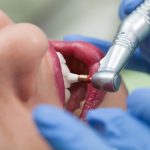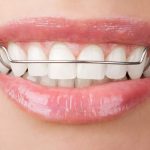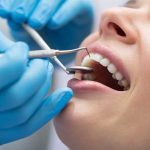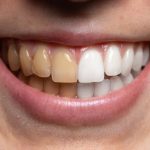When Do Dogs Lose Their Baby Teeth? Explained by Experts

Dogs are one of the most popular pets around the world. They are known for their boundless energy, loyalty, and playful nature. As pet owners, we want to make sure that our furry friends are as healthy as possible. One aspect of a dog’s health that is often overlooked is their dental hygiene. Just like humans, dogs can get cavities, gum disease, and other dental problems. One important aspect of dental health is knowing when dogs lose their baby teeth. The process of a dog losing their baby teeth is called \exfoliation.\ It’s a natural and necessary process that allows adult teeth to come in. Just like humans, dogs have two sets of teeth in their lifetime. Their baby teeth, also known as \deciduous teeth,\ start to come in when they are around three to four weeks old. As they grow, their baby teeth begin to fall out to make way for their adult teeth. Understanding when this process occurs can help pet owners take better care of their dog’s dental health. In this article, we will explore when dogs lose their baby teeth and what to expect during the process.
Knowing when dogs lose their baby teeth is important for a number of reasons. Firstly, it helps owners to monitor their pet’s dental health. If baby teeth don’t fall out on schedule, it can cause problems with the positioning and alignment of adult teeth. Additionally, it’s important to know when dogs are losing their baby teeth so that owners can adjust their pet’s diet and exercise regime accordingly. During this time, dogs may experience discomfort and pain in their mouth, so they may need softer food or less intense exercise. Finally, keeping track of when baby teeth fall out can be important for medical reasons. If a tooth doesn’t fall out on schedule, it could be a sign of an underlying health problem that needs to be addressed by a veterinarian.
Teething is a natural process in dogs that occurs when they are around three to six months old. During this time, puppies start to lose their baby teeth and develop their adult teeth. The process can be uncomfortable for the puppy, and they may experience symptoms such as drooling, chewing on objects, and mild inflammation in their gums. As the adult teeth grow in, the baby teeth will fall out, making room for the new teeth. It’s important to monitor your puppy during this time and provide appropriate chew toys to help alleviate discomfort and prevent destructive chewing behavior. Once the teething process is complete, your dog will have a full set of adult teeth, and it’s important to maintain their oral health through regular brushing and dental check-ups.
What are baby teeth in dogs?

Baby teeth, also known as deciduous teeth, are the first set of teeth that dogs develop. These teeth start to emerge when puppies are around 3-4 weeks old and they usually have a full set of 28 baby teeth by the time they are 6-8 weeks old. Baby teeth are smaller and whiter than adult teeth, and they have a flat chewing surface. They are also not as strong as adult teeth, which is why puppies should not be given hard toys or bones to chew on until their adult teeth have fully developed. Baby teeth play an important role in a puppy’s development. They allow puppies to eat solid food, which is essential for their growth and development. They also help puppies learn how to chew and bite, which is important for their socialization and training. However, baby teeth are not meant to last forever. As puppies grow, their adult teeth start to develop underneath their baby teeth, causing the baby teeth to become loose and eventually fall out. The process of losing baby teeth and growing adult teeth is known as teething, and it can be a painful and uncomfortable experience for puppies.
Baby teeth, also known as deciduous teeth, are the first set of teeth that humans and animals develop. In the case of dogs, they typically have 28 baby teeth that will eventually be replaced by their permanent teeth. The purpose of baby teeth is to aid in the early stages of development, allowing infants and puppies to begin chewing and eating solid food. Additionally, baby teeth help to facilitate proper speech development and provide a foundation for the permanent teeth to grow in properly. As the puppy grows and their jaw and skull develop, the baby teeth will begin to loosen and fall out, making way for their adult teeth.
Dogs, like humans, have two sets of teeth in their lifetime; the first set is the baby teeth or deciduous teeth, while the second set is the permanent teeth. Puppies are born without teeth, but their deciduous teeth start to emerge within the first few weeks of life. On average, dogs have 28 baby teeth, which are located in the front and back of the mouth on both the upper and lower jaws. The front teeth, or incisors, are used for grasping and tearing food, while the back teeth, or molars, are used for grinding and crushing. As puppies grow and develop, their baby teeth will begin to fall out, making way for their permanent teeth to come in.
When do dogs start teething?
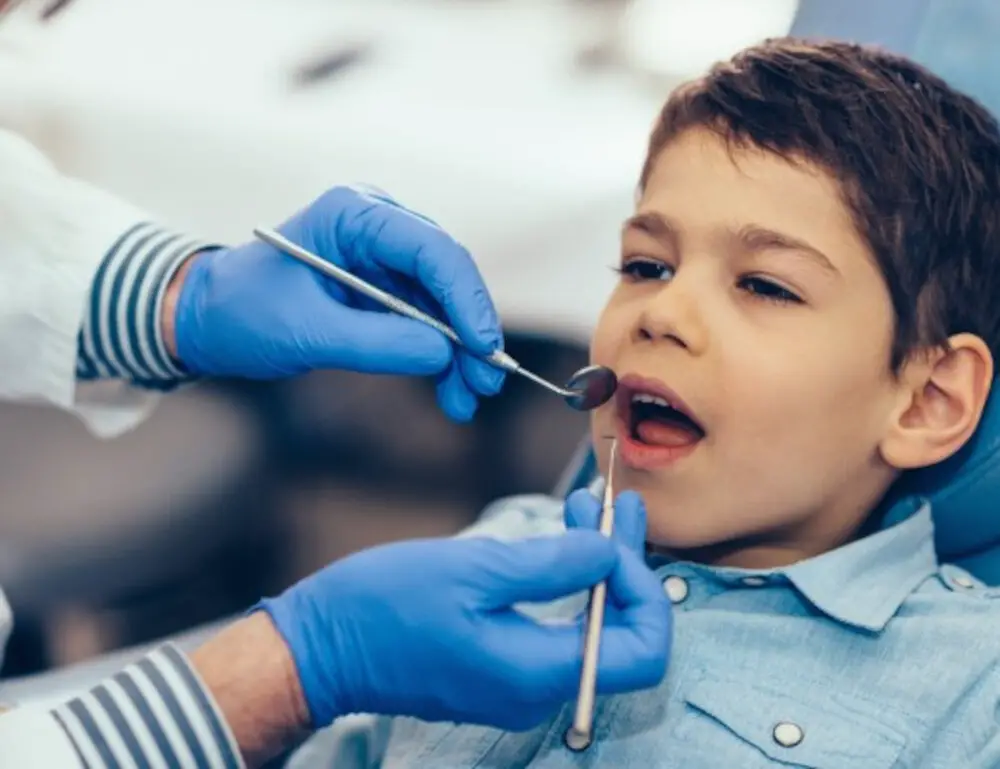
Dogs, like humans, go through a teething process that marks the transition from puppyhood to adulthood. Usually, teething in dogs starts when they are around three to four weeks old, and it continues until they are six to eight months old. During this process, puppies lose their baby teeth and grow adult teeth, and it can be a challenging time for both the dogs and their owners. As the puppy’s teeth grow, they may experience discomfort and pain, and they may chew on anything they can find to relieve their discomfort. For owners, it is essential to provide their puppies with safe chew toys and treats to help them through this process. It is crucial to monitor your puppy’s teething process and make sure they are not experiencing any serious problems. Some puppies may experience delayed teeth growth or other dental issues that require veterinary attention. Additionally, puppies may be more prone to dental problems later in life if their baby teeth are not appropriately cared for during the teething process. Therefore, it is essential to provide your puppy with a healthy diet, plenty of water, and regular dental care to ensure healthy teeth and gums. With proper care and attention, your puppy can make it through the teething process with minimal discomfort and emerge with a healthy set of adult teeth that will last a lifetime.
Puppies typically start teething around 3-4 months of age, as their baby teeth begin to loosen and fall out to make room for their adult teeth. This process can be uncomfortable and painful for puppies, as their gums may become swollen and tender. To alleviate discomfort, puppies may chew on toys or objects to help relieve the pressure in their mouths. It’s important for puppy owners to provide appropriate chew toys that are safe and durable to help redirect their puppy’s chewing behavior and protect their belongings from destruction. As the adult teeth start to come in, puppy owners should also monitor their pet’s oral hygiene and provide regular dental care to ensure their teeth and gums remain healthy.
During the teething stage, puppies will start to lose their baby teeth and grow their permanent ones. This process usually starts around 3-4 months of age and can last until they are 6-8 months old. Owners may notice a few signs that their puppy is teething, such as excessive chewing on objects, drooling, swollen or bleeding gums, and reluctance to eat hard food. Puppies may also become more irritable or restless during this time. Providing appropriate chew toys and treats, as well as regular dental care, can help alleviate discomfort and prevent destructive behavior.
When do dogs lose their baby teeth?
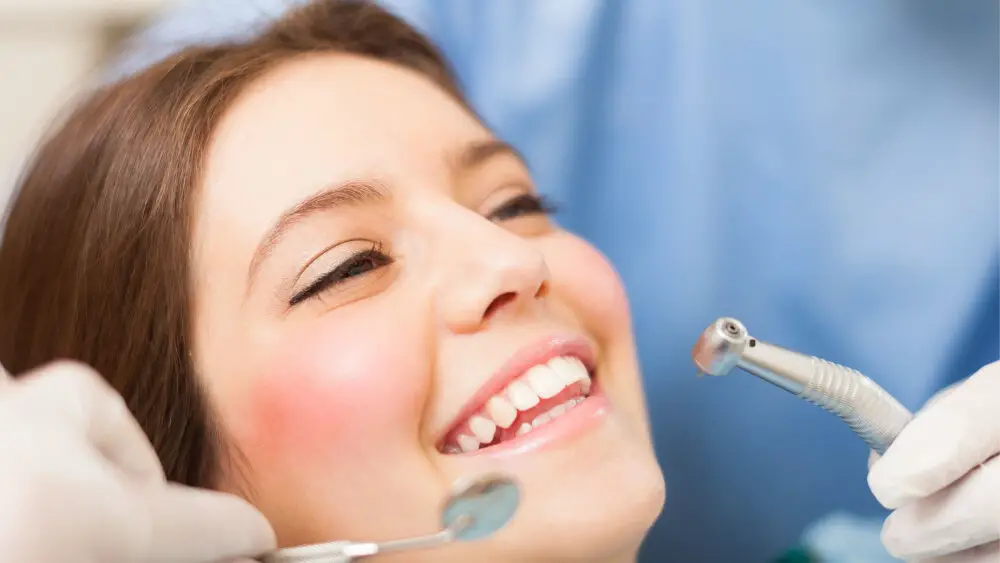
When it comes to the development of dogs, it is important to understand that their baby teeth, also known as deciduous teeth, play a crucial role in their growth. These temporary teeth begin to emerge at around 3-4 weeks old and continue to develop until the puppy is between 4-6 months old. During this time, puppies will experience the same teething symptoms as human babies, such as discomfort, irritability, and a strong urge to chew on objects. As the puppy grows, their adult teeth will begin to push through the gums, gradually replacing the baby teeth. In general, dogs will lose their baby teeth in a specific sequence, starting with the incisors, followed by the canines, and then the premolars. The molars are usually the last to fall out. By the time the puppy is around 8 months old, all of their adult teeth should have fully emerged. It’s important to note that some breeds may experience delayed or accelerated tooth development, so it’s always best to consult with a veterinarian if you have any concerns about your dog’s dental health. Overall, understanding the timeline for when dogs lose their baby teeth can help pet owners provide appropriate care and support during this important phase of their furry friend’s development.
As puppies grow, they begin to lose their deciduous or baby teeth, which are replaced by permanent teeth. This process usually starts when the pup is around three to four months old and continues until they are six to eight months old. The first teeth to fall out are usually the incisors, followed by the canine teeth and the premolars. During this time, puppies may experience discomfort and pain, which can lead to excessive chewing and biting. It’s essential to provide your puppy with plenty of chew toys to help them through this process. If you notice any signs of infection or excessive bleeding, it’s important to consult with your veterinarian.
The order in which baby teeth are lost in dogs can vary, but typically, the incisors, or front teeth, are the first to fall out, followed by the canines and premolars. The molars are usually the last to go. The timing of tooth loss can also vary depending on the breed and size of the dog. Smaller breeds tend to lose their baby teeth earlier than larger breeds. It’s important to keep an eye on your dog’s teeth during this process, as some teeth may not fall out on their own and may require extraction by a veterinarian. Regular dental checkups and cleanings can also help ensure your dog’s teeth and gums stay healthy as they transition from baby teeth to adult teeth.
What happens after a dog loses its baby teeth?
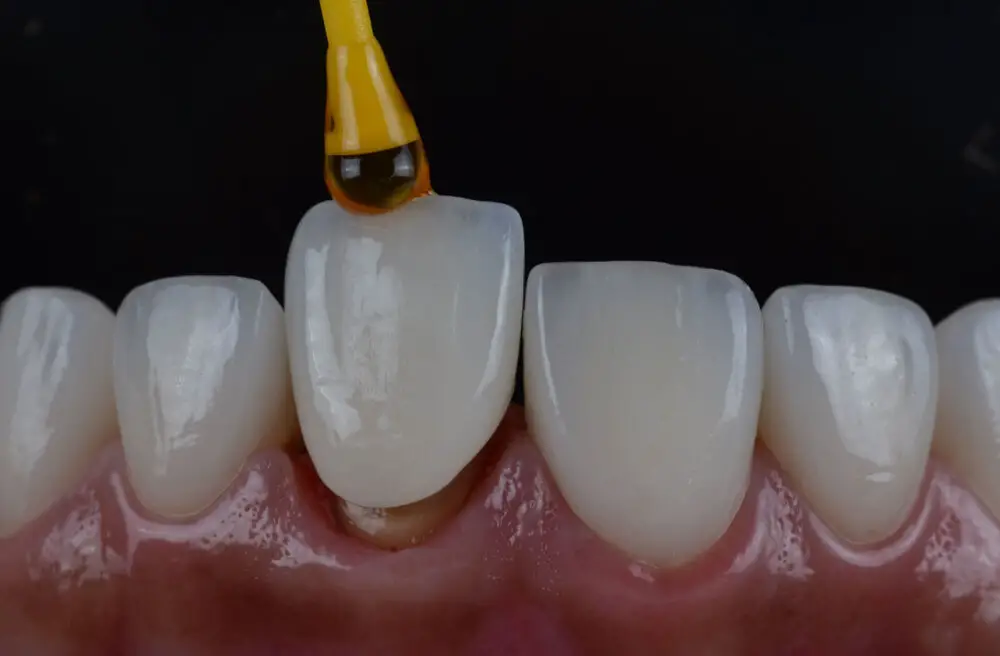
When a dog loses its baby teeth, it marks a significant milestone in their life. At around 3 to 6 months of age, a puppy’s baby teeth will begin to fall out, making way for their permanent teeth to grow in. This process is entirely natural and typically painless for the puppy. However, it’s not uncommon for dogs to experience discomfort or pain during this time. As their teeth fall out and new ones grow in, they may experience irritation, swelling, or bleeding in their gums. Owners should keep a close eye on their dog during this time and provide appropriate chew toys or treats to help soothe their discomfort. After a dog loses its baby teeth, their permanent teeth will grow in, and they will have a full set of adult teeth. Adult teeth are stronger and more durable than baby teeth, which means that dogs can now enjoy a wider variety of foods and treats. However, this also means that their teeth require proper care and maintenance to ensure their health and longevity. Owners should brush their dog’s teeth regularly and provide them with dental chews or toys to help remove plaque and tartar buildup. By taking proper care of their dog’s teeth, owners can help prevent dental issues and keep their furry friend healthy and happy for years to come.
Once a dog starts losing its baby teeth, it indicates that they are entering the adolescent stage of their life. This process is known as teething and can be quite an uncomfortable experience for them. The baby teeth start to loosen and eventually fall out, making way for the permanent teeth. This process usually starts when the dog is around 3 to 4 months old and can continue until they are 6 to 8 months old. During this time, it’s important to provide them with appropriate chew toys to alleviate the discomfort and prevent them from chewing on inappropriate items. Once all the baby teeth have fallen out, the dog’s permanent teeth will have fully emerged and they can continue to grow into healthy adult dogs.
Maintaining good dental hygiene is extremely important for adult dogs. Without proper dental care, dogs are at risk of developing periodontal disease, which can lead to tooth loss, pain, and even systemic infections. Regular brushing and dental check-ups can help prevent these issues and keep your dog’s teeth and gums healthy. In addition to brushing, providing your dog with dental chews, toys, and treats can also help remove plaque and tartar buildup. As dogs age, their dental needs may change, so it’s important to work with your veterinarian to develop a dental care plan that meets your dog’s individual needs. By prioritizing your dog’s oral health, you can help ensure they live a happy and healthy life.
The article \When Do Dogs Lose Their Baby Teeth Explained by Experts\ discusses the timeline of a dog’s dental development, shedding light on when dogs lose their baby teeth. Puppies typically start losing their baby teeth at around 3-4 months, with the process being completed by 6-7 months. During this period, dogs experience discomfort and may chew on objects to alleviate it. Experts also explain the importance of dental care for dogs, both during their teething phase and throughout their lives, as poor dental hygiene can lead to various health issues. The article emphasizes the need for regular dental checkups and brushing, as well as the importance of providing dogs with chew toys and bones to maintain healthy teeth and gums.
Understanding the teething process in dogs is crucial for every dog owner. It helps them identify any potential dental issues that their furry friends may face during this period, such as gum inflammation or tooth decay. Furthermore, it allows owners to provide the necessary care and attention to their puppies during this time, such as providing appropriate chew toys and monitoring their diet. By doing so, owners can ensure that their dog’s adult teeth grow correctly and prevent any future dental problems. Therefore, it is recommended that all dog owners educate themselves on the teething process to provide their puppies with the best possible care.
Conclusion
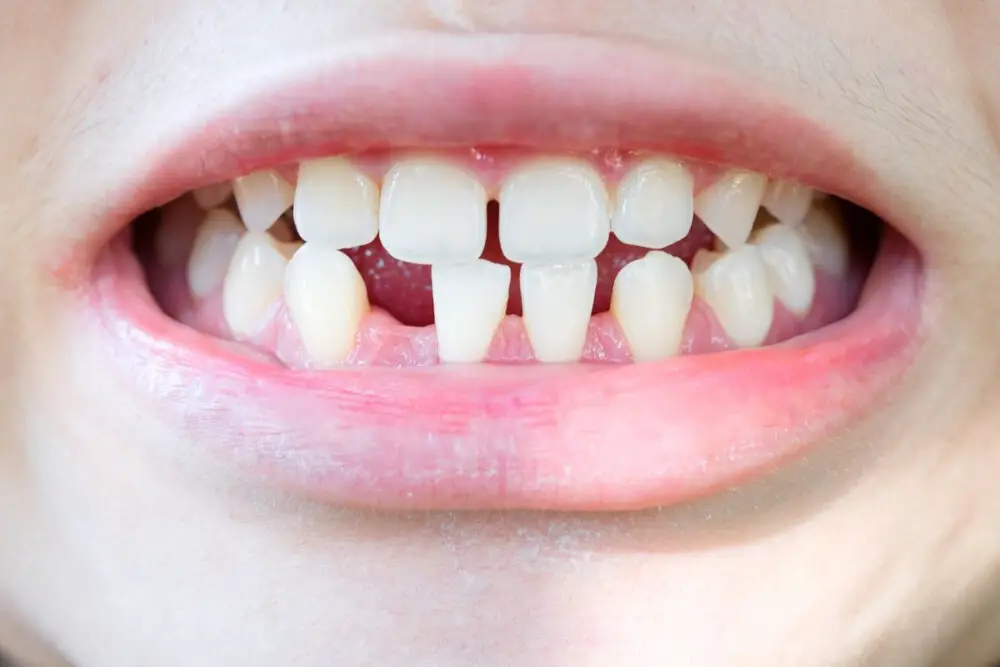
In conclusion, the process of losing baby teeth in dogs is a natural part of their growth and development, which occurs at different ages depending on the breed and individual characteristics. As experts suggest, it is essential to monitor your dog’s dental health during this transition period, provide them with appropriate chew toys, and seek veterinary care if there are any signs of discomfort or complications. By being attentive and proactive, you can ensure that your furry friend maintains healthy teeth and a happy smile throughout their life.

